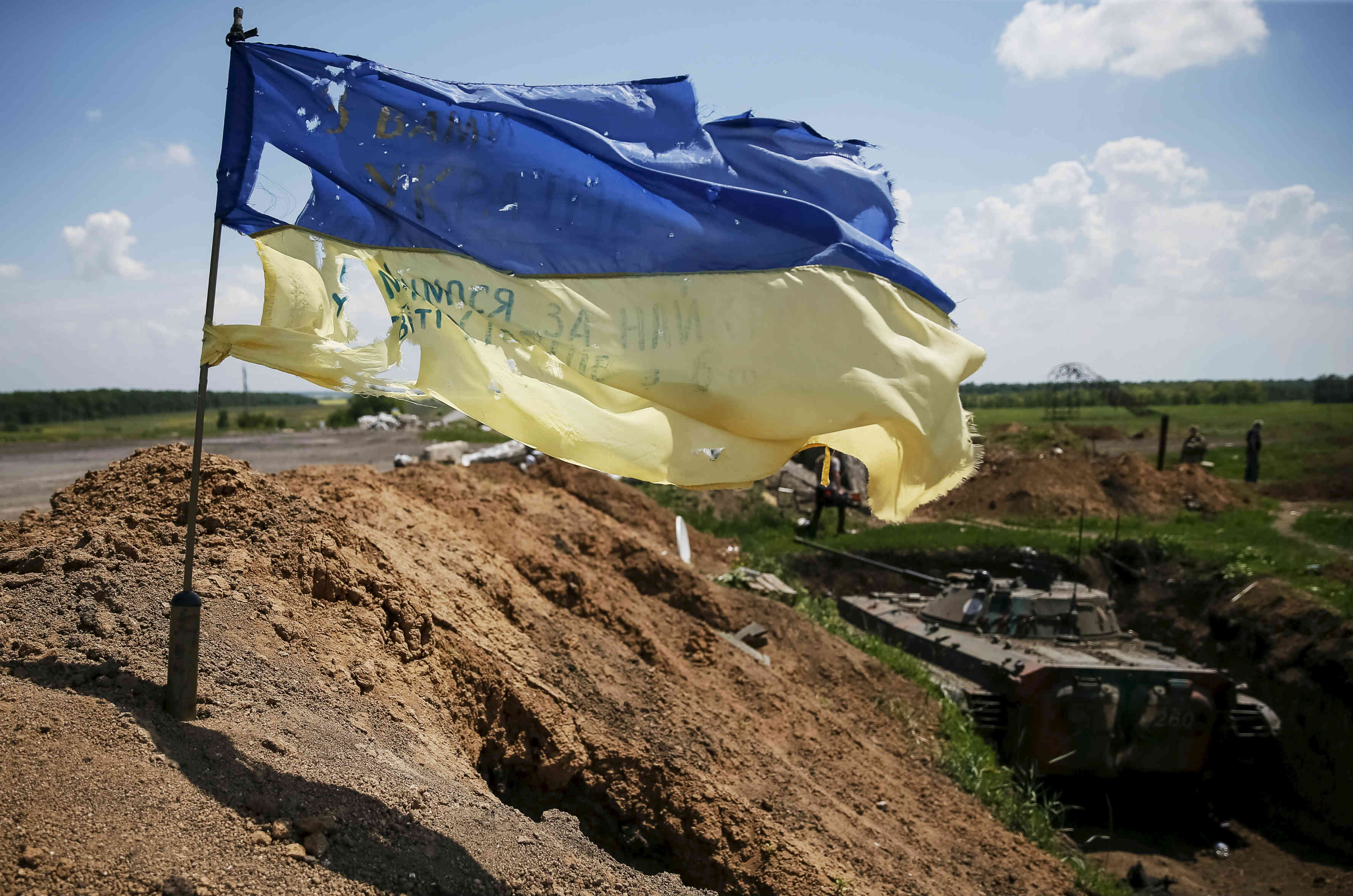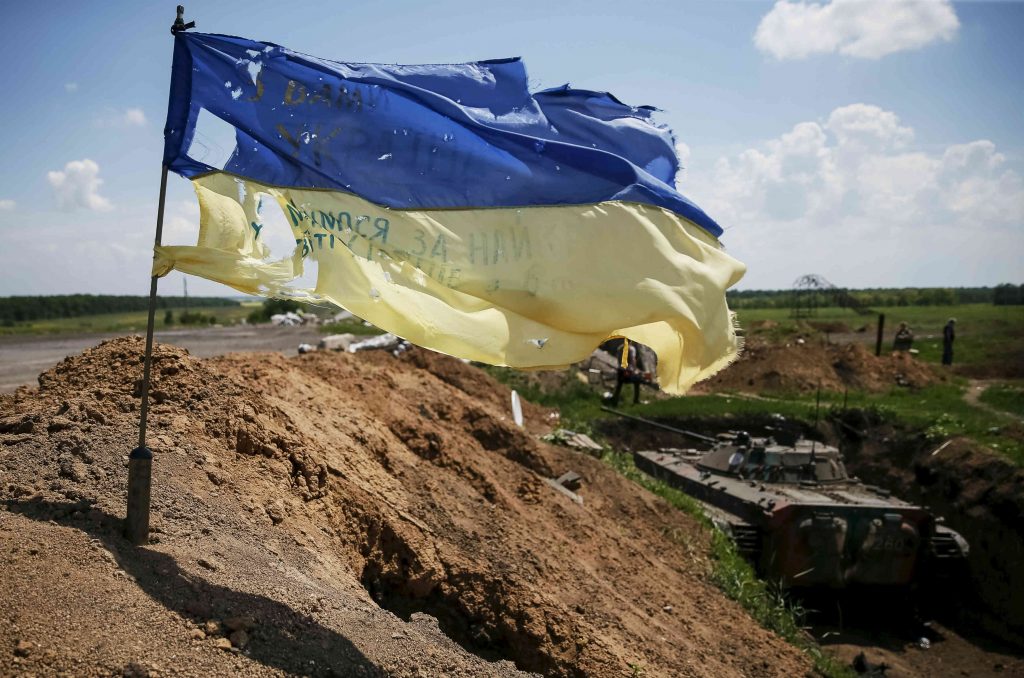 Much has been made about the tactics and military doctrine driving Russian operations in eastern Ukraine. Some analysts see Russia following a hybrid war strategy, while others contend that the Kremlin is simply trying to “catch up conceptually to the realities of modern war.” One thing is clear: Russia is manipulating eastern Ukraine through misdirection, bluff, intelligence operations, and targeted violence.
Much has been made about the tactics and military doctrine driving Russian operations in eastern Ukraine. Some analysts see Russia following a hybrid war strategy, while others contend that the Kremlin is simply trying to “catch up conceptually to the realities of modern war.” One thing is clear: Russia is manipulating eastern Ukraine through misdirection, bluff, intelligence operations, and targeted violence.
Russia’s recent massing of troops and military hardware at its Kuzminsky firing range—only thirty miles from the Ukrainian border—raises fears that the escalating conflict may soon involve Russian regulars. Yet despite the telltale signs of Russian involvement such as unmarked vehicles, servicemen without insignia, and weaponry routinely seen in the possession of pro-Russian separatists, this latest buildup does not signal another massive Russian incursion. At least not yet.
Instead, if observed through the wider lens of Russian force projection in Ukraine, this most recent buildup is part of a greater tactic in which the ambiguity of strategic goals, reinforced by occasional kinetic moments, keeps the Ukrainian conflict at a deadly simmer. It also bleeds Ukraine economically. According to Ukrainian Prime Minister Arseniy Yatsenyuk, the war costs the country $5 million to $7 million per day—a price Ukraine cannot afford.
Russia’s strategy is effective and dangerous. It forces Ukraine’s military planners to overgeneralize past events in an attempt to find patterns to describe real-time developments. Given the current buildup, it is tempting to point to the events leading up to the Ukrainian defeats in Ilovaisk and Debaltseve. After all, in both cases, Russian forces conducted major military exercises near the border prior to Russia’s incursions. But this approach falls apart upon closer examination.
Recent fighting in Maryinka and Krasnohorivka is intensifying, but nothing suggests that it is nearing the attrition levels of Ilovaisk or Debaltseve. Additionally, current fighting is still at a level—in terms of casualty rates and Ukraine’s response—that can be considered favorable for separatist forces. In Ilovaisk and Debaltseve, the separatists were either on the cusp of defeat or logistically unable to meet their stated objectives prior to Russian intervention. Crucially, Russian involvement in both situations was driven by a definable end goal—forcing the Ukrainian government to the negotiating table to reach internationally recognized ceasefire agreements and allow the rebels to regroup.
In the current environment, Russia seems content with the incremental gains made by separatists. From Russia’s prospective, such gains are easy to maintain whereas large additions of Ukrainian territory might be difficult to hold. In the latter scenario, “Russian troops and their agents may find themselves overextended,” according to John E. Herbst, Director of the Atlantic Council’s Dinu Patriciu Eurasia Center.
Another key aspect of Russia’s strategy is its reliance on non-military means to achieve short- and long-term political and strategic goals. Though it is hard to argue that placing a large contingent of weaponry and manpower near a war zone to influence proceedings is non-military, within the context of Russian strategy in Ukraine such a distinction can be made. In a 2013 article by Russian General Chief of Staff Valerii Gerasimov that many cite as the foundation of Russia’s current military doctrine, he writes that “the open use of forces—often under the guise of peacekeeping and crisis regulation—is resorted to only at a certain stage, primarily for the achievement of final success in the conflict.”
At the moment, unless the separatists try to take Mariupol or make a deep push into Ukrainian territory—both of which would require Russia’s tacit approval and likely trigger even stiffer sanctions—it is hard to imagine that the Russian military will inject mass force.
Russian posturing on the Ukrainian border also satisfies a wide array of audiences. By quickly building up forces, the Russian Defense Ministry shows domestic and foreign observers that its June 1 promise to boost combat training by 150 percent this summer was not a bluff. It also supports the Kremlin’s narrative that sanctions are having little impact on Russia’s ability to project power in the region.
From Ukraine’s perspective, the Russian military presence rightfully causes alarm. Not only does it force Ukraine to put its troops on heightened alert, which carries economic costs but, according to Adrian Karatnycky, Nonresident Senior Fellow at the Atlantic Council, it “requires the diversion of forces from front-line positions that are focused exclusively on well-armed separatist units.”
By using a strategy of intentional ambiguity, Russia can amass forces without firing a single shot and still hurt Ukraine while promoting the narrative of a resurgent Russia.
Ruben Gzirian is an Eastern Europe analyst at Navanti, an applied analytics company based in Arlington, Virginia.
Image: A tattered Ukrainian national flag flutters in the wind at a position held by the Ukrainian armed forces near the town of Maryinka, eastern Ukraine, June 5, 2015. Ukraine's president told his military on Thursday to prepare for a possible "full-scale invasion" by Russia all along their joint border, a day after the worst fighting with Russian-backed separatists in months. Reuters/Gleb Garanich

